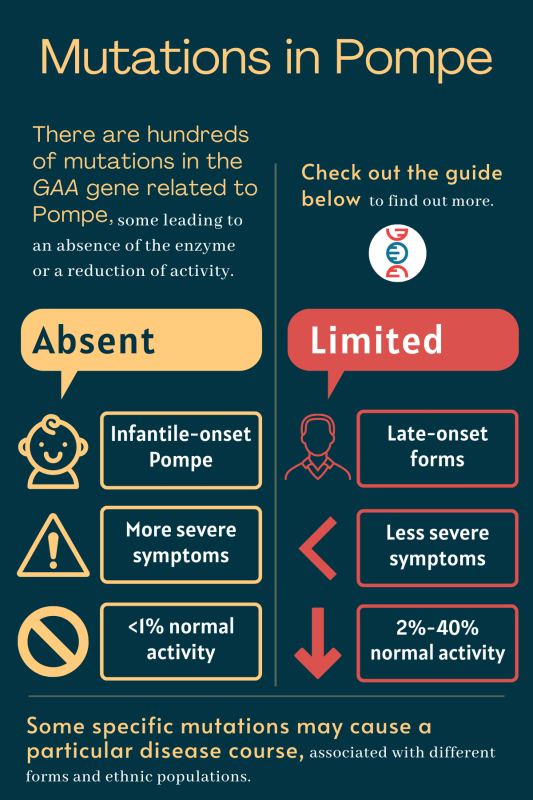FAQs about Pompe disease causes
Pompe disease is caused by genetic mutations that are inherited from a person’s biological parents. The disease-causing mutations are present from the moment of conception, though disease symptoms may not become apparent until later in life.
While individuals with infantile-onset Pompe usually have obvious abnormalities within the first few months after birth, some people with late-onset forms of Pompe disease do not experience any overt symptoms of the disease until adulthood. The onset and course of Pompe depend on the severity of functional defects resulting from mutations in the GAA gene. These mutations lead to altered GAA enzyme activity, and consequently to glycogen accumulation inside cells to toxic levels. When GAA enzyme activity is impaired but not absent, glycogen builds up more slowly, and so the disease symptoms take longer to develop and progress. Late-onset Pompe patients may have up to 40% of normal levels of the functional enzyme, which may be sufficient for them to have a symptom-free life for decades.
All forms of Pompe disease are life-threatening. This is because the disease can cause problems with the muscles of the heart and/or the muscles that are needed to control breathing. These problems can ultimately lead to heart or respiratory failure in patients.
Life expectancy depends on the type of Pompe disease. In general, later age at symptom onset is associated with a longer life expectancy. If untreated, babies with infantile-onset Pompe usually die from heart failure within the first year of life, whereas patients with late-onset disease who don’t develop symptoms until adulthood may live into their 50s. Modern treatments, particularly enzyme replacement therapy, are improving survival outcomes for people with Pompe.
Pompe disease is equally common in male and female patients. The GAA gene, the mutated gene in Pompe, is not located in sex-associated chromosomes.
Related Articles

 Fact-checked by
Fact-checked by 








